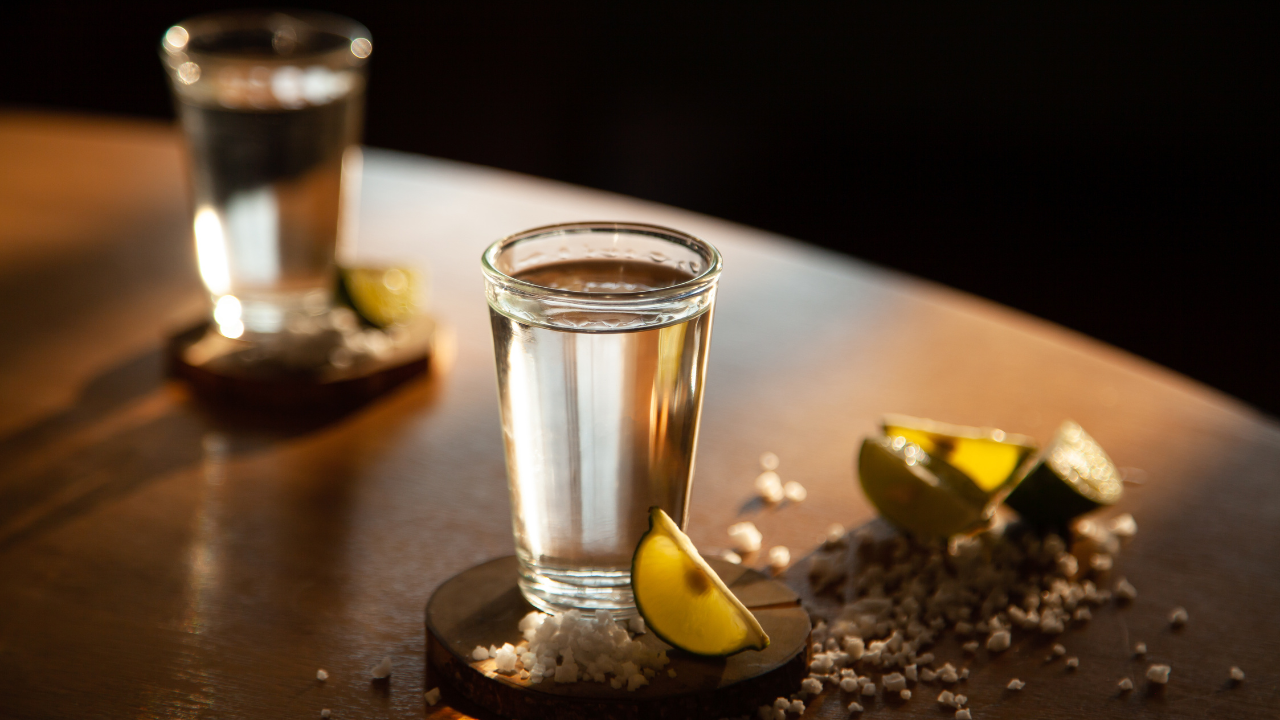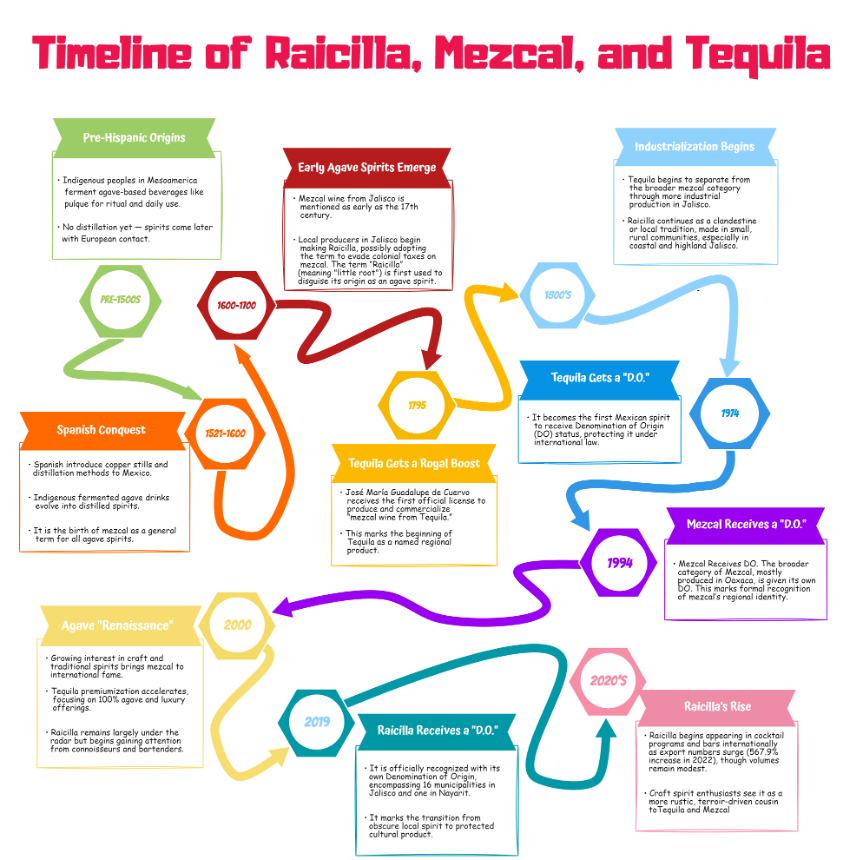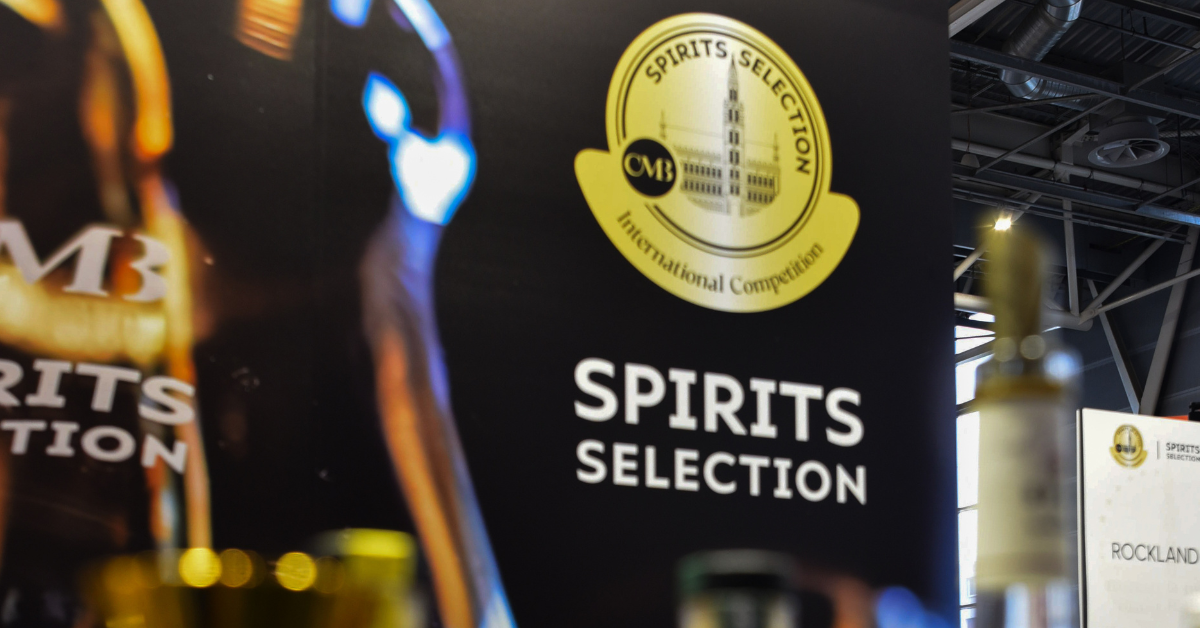Raicilla: Jalisco’s Other Agave Spirit with DO

As the Spirits Selection by CMB Jalisco 2025 draws near, I find myself reflecting on the vast world of agave spirits. Tequila is, of course, the icon -and for good reason. But this year, we’ll also take some time to explore a lesser-known member of the agave family: Raicilla. We will conclude the 2025 edition of Spirits Selection by CMB, travelling through the Raicilla-producing regions as part of the “Raicilla Route,” to bring a spotlight on a spirit that deserves more attention.
A Spirit Hiding in Plain Sight
Raicilla is not new, far from it! It’s been produced for over 400 years in Jalisco and parts of Nayarit, mostly in remote areas of the Sierra Madre and along the Pacific coast. In fact, Raicilla could be considered the ancestral agave distillate of Jalisco -though producers may have once deliberately avoided that association. Back in the 1700s, to sidestep colonial taxes on other agave spirits, locals began referring to their distillate as Raicilla, which roughly translates to “little root.” It was clever marketing for its time -implying a different origin, though it was (and still is) made from the heart of the agave.
Unlike Tequila, which must be made exclusively from Blue Weber agave, Raicilla can be produced from a variety of agave species, depending on the region. In the mountains (Raicilla de la Sierra), producers often use the Agaves Maximiliana Baker, Inaequidens Koch and Valenciana, while the coastal versions (Raicilla de la Costa) are typically made from Agaves Angustifolia Haw and Rhodacantha. This botanical diversity leads to a wide range of organoleptic profiles -from smoky and earthy to floral, herbal, or even citrusy. If you’re tasting Raicilla for the first time, be prepared for surprises.
Traditional Techniques, Familiar Roots
To better understand Raicilla, it helps to see where it overlaps with -and differs from- its agave cousins. Like other traditional agave spirits, Raicilla is typically produced using artisanal methods: agave hearts are often roasted in earthen pits, fermented in open wooden vats, and distilled in small copper or clay stills; it’s very common to find ovens in the sierra known as ‘mampostería tipo panadero’ (brickwork baker-style ovens). This imparts a rustic, sometimes smoky character. While Raicilla producers may now use more modern tools, the majority still operate at a small scale, preserving the techniques handed down over generations.
Similarly to other agave spirits, Raicilla can be categorized as Raicilla (this category tends to use more industrial processes, though the word industrial does not appear on labels), Raicilla Artesanal (this category likely categorizes the majority of Raicilla production), or Raicilla Ancestral.
Classifications, Aging, and Agave Use
Raicilla must be made from 100% agave -mixto versions are not allowed- and the spirit is classified based on production method -previously mentioned- and aging:
- Joven or Blanca – unaged, highlighting pure agave character.
- Envejecida o madurada en vidrio – aged over 12 months in glass, typically underground.
- Reposada u Oro – aged 2–12 months in wood.
- Añeja – aged over 12 months in wood.
- Extra Añejada – aged over 24 months in wood.
- Abocada – flavored with natural ingredients like fruits or herbs after distillation.
- Destilado con Raicilla – a type of alcoholic beverage made from an artisanal or traditional Raicilla that undergoes an additional distillation.
Raicilla producers may also blend different agave species, giving them creative flexibility that Tequila does not allow. This results in an even wider range of flavor profiles, from vegetal and mineral to tropical and bright, depending on the agave varieties and production regions.
It’s very interesting that Raicilla can be a lady or a gentleman. In the sierra, they refer to it as a woman: La Raicilla. On the coast, they refer to it as a man: El Raicilla. But since the sierra is where the most influential groups behind the Denomination of Origin have emerged, you’ll notice that the official standard refers to the spirit as a lady: La Raicilla. Even in its aging terms… Reposada, añejada.
A Category in Transition
Despite its deep roots, Raicilla has spent most of its life in the shadows -overlooked by the mainstream and often made in small batches for local consumption. That began to change in 2019, when Raicilla received its official Denomination of Origin (DO). This recognized and protected the traditional methods and regions of production, which now include 16 municipalities in Jalisco and one in Nayarit.
Still, it’s fair to say Raicilla remains small compared to its more famous cousin. As of 2024, roughly 550,000 liters are produced each year -just a sliver of Tequila’s towering 600 million liters. A decade ago, Raicilla’s annual output was only about 80,000 liters, making the recent growth all the more impressive. Exports alone rose by 567.9% from 2021 to 2022, a clear sign of growing international curiosity about artisanal and regionally distinct spirits.
Looking Ahead: Raicilla’s Emerging Potential
As global interest in Mexican and agave spirits continues to rise, Raicilla stands poised to capture the attention of discerning consumers seeking something unique. While still niche, it’s benefiting from the broader “agave trend” and slowly stepping into more mainstream territory.
Although full export breakdowns are limited, it’s clear that the United States remains the primary international destination for Raicilla -just as it is for Tequila. That said, Raicilla exports declined by 29.3% in 2024, hinting at some market volatility and perhaps an over-reliance on a single export partner. As with Tequila, market diversification will be key if Raicilla is to grow sustainably and carve out its own space on the global spirits stage.
During the Spirits Selection by CMB Jalisco 2025, by spending time with Raicilla, we’re not just honoring an overlooked spirit. We’re helping connect it with a wider audience -one that seems increasingly ready to explore what lies beyond the familiar.
Personally, I’m looking forward to that part of the journey. I’ve spent many years working with Tequila and learning its nuances. Now, with Raicilla, I feel like I’m turning the page to a new chapter in the same book -a chapter I haven’t read yet, but one I know will deepen my understanding of Jalisco, its land, and its people.
Ulric Nijs
References
- Consejo Mexicano Promotor de la Raicilla A.C. 2019
- Mexican Institute of Industrial Property (IMPI), Denomination of Origin for Raicilla (2019).
- MDPI (2024). *Sustainability in Agave Spirits Production.* https://www.mdpi.com/2071-1050/16/19/8633
- Jaime Villalobos Sauza, Member of the Mexican Academy of Tequila, Wine and Mezcal Tasters A.C., Master Distiller, Trainer of Tequila Experts, and Co-founder of Cultura y Capacitación del Tequila A.C.



